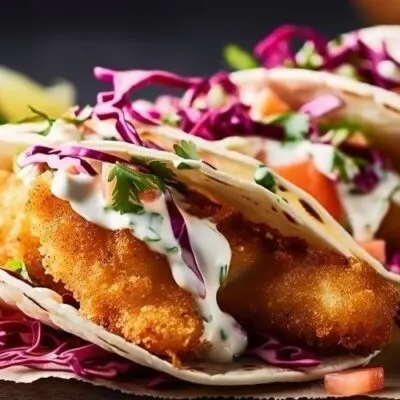Directions
Today, we want to offer you the mixed paella recipe of a great Spanish cook, Johana Rueda.
We tested it, and we were dazzled, so much so that we prayed for weeks, but in the end, we managed to get the recipe. We don’t add anything else, and we leave the word to Mrs. Rueda.
I moved to Italy almost 20 years ago, and now this is my home, but my heart remains in Spain. Every year I come back to visit relatives and friends, and every time I am surprised by the differences I notice, not only over time but also in character and taste.
Now my palate has also turned to the “flavor of Italy.”
But the mixed paella never changes. It’s the taste of when I was little—my Proustian biscuit, if we want to put it this way.
Today I want to offer you the mixed paella recipe that has been prepared in my family for generations. It is not the traditional Valencian paella but one that is mixed, rustic, and full of flavors and colors that reminds me of my homeland.
The one that is prepared in every house for anniversaries is the one that my mother prepares for me when I get home.
Ingredients for making the perfect Paella Mixta
For six hungry persons
- Rice 500 grams
- Clams 500 grams
- Shrimps 300 grams (use the heads for the broth)
- Mussels 350 grams
- Chicken wings or legs (a couple for person)
- Loin of pork 300 grams
- Chorizo 200 grams
- Fish or meat broth
- Peas 250 grams
- 1 onion, 2 ripe tomatoes, 1 red pepper, 1 green pepper
- 2 cloves of garlic
- Saffron
- Parsley and laurel
- Olive oil, salt, and pepper
- Sweet paprika
How to make the Paella Mixta

Put two tablespoons of olive oil in a hot pan, add the mariscos and a glass of white wine, and cook for 8–10 minutes, until the shells have opened.
Cut the chicken, chorizo, and pork into pieces about the same size. Again, we’ll put three tablespoons of oil in the pan where the paella will be cooked. Let the mashed garlic brown slowly, but throw it away before you cook the meat or it will make the meat taste bitter.
It’s important to stir-fry the meat just right; it should be crispy on the outside and juicy on the inside. The laurel should be added at the end to add a bit of scent.
Set the meat aside and chop the onion, which will be sautéed for four minutes. Add the finely chopped and peeled tomatoes and let them cook slowly. This is called sofrito in Spanish. Then add the peppers, which you will have sautéed with oil, salt, and pepper, and finally the peas.
In just a few minutes, add the rice, two cups of broth in which the saffron must be completely dissolved, and a small spoonful of sweet paprika for the finishing touch.
Don’t forget to use the broth from the cooked mariscos, which is the most important part of a good paella.
Keep it on high heat for ten minutes, until the rice is dry. Then turn down the heat and let it cook for another seven minutes. When the rice is done, add the seafood and parsley, let it sit for a few minutes, and then bring it to the table.
Paella cooking tips
Color and consistency are crucial. The dish must be brilliant, all grains well shelled, the mariscos juicy. For this reason, you need to cook the ingredients separately to maintain them intact: you have to crunch a symphony of different textures in your mouth.

What rice should you use?
Rice. Buy the right one: Calasparra or Bomba, but also a simple Arborio is ok. The important thing is that it is not a Carnaroli: the grains must be thin. And above all, don’t cook it as it was a risotto: after the first ten minutes burst, you have to tone down the heat. It’s a shocking, not a slow, creamy kind of cooking. And on the bottom of the pan, iron pan, of course, there must be a golden caramelized crust.
How is paella mixta traditionally cooked?
In order to make a classic paella mixta, you will need a paellera, which is a large, shallow pan that has been built expressly for the purpose of creating paella. In order to cook the ingredients, first they are fried in the pan, and then chicken or rabbit broth along with some white wine are added to the pan and heated over high heat. After everything else has been finished, the seafood is placed on top of the rice and continued to simmer until it is completely done.
Paella is an easy-going recipe, so don’t shell the mariscos nor season it with some exotic spices or herbs. I know someone uses cilantro, it is not that bad, but it has nothing to do with Paella. The flavors are simple, well defined, and wisely mingled for centuries. Accordingly, you should avoid frozen mariscos and choose top-notch ingredients. You don’t have to splurge on pounds of imperial shrimps…

The beauty of this recipe is that it’s possible to adjust it with what you have in your kitchen or match it with your mood: mine is a muy rica Spanish-Colombian version that sums up my experiences, and I’m sure that will not disappoint you!
What is the origin of paella mixta?
Paella may be traced back to the Valencian region of Spain, where it is thought to have been originated by agricultural labourers who would cook a meal in a single pot over an open fire while working in the fields. Today, paella is considered to be a regional specialty of Spain.
Can paella mixta be made in a pressure cooker or slow cooker?
Although a slow cooker or pressure cooker can be used to prepare paella mixta, it is crucial to keep in mind that the rice may end up having a different consistency than it would if it were cooked in a traditional paellera. So don’t use a slow cooker, please!
Paella wine pairing guide: which wine shall we serve with Paella?
We have a lot of options here: an intense flavor with no particular issues.Hence our goal is to stress the delicate balance among the ingredients and provide a lot of freshness to keep the palate ready for the next bite.
We have a lot of options here: a strong flavor with no issues.aromatic herbs in the wine would be a good playmate for laurel and parsley, and, finally, a fair amount of saltiness is required to balance the sweetness of mariscos and vegetables.
Lambrusco, Frappato, Montepulciano Cerasuolo, and all the outstanding pink wines from Apulia made of Negramaro and Malvasia Nera are natural pairings, but it would be like stealing candy from a baby: these wines have incredible matching power.
It would also be nice to try a lovely Spanish wine like Tempranillo, not a Gran Riserva but a joven (young) wine or Crianza, with a vibrant freshness of palate and bouquet of flowers and tart fruits like cherry and mulberry, to create a kingly match with Paella.
Yes, we’re still talking about Sangiovese, in this case the 2007 Chianti Viacosta Riserva, which is proudly earthy and classic, with a thrilling acidity, candied cherry roundness that pairs beautifully with the shrimp, and a very elegant tannin for a final waltz with the chorizo.
If we add paprika and peppers to the mix, we can try a more complex wine like the 2007 Carmignano Terre a Mano, a remarkable synthesis that has the airy potpourri of the Sangiovese with the addition of the zesty smoked suggestions of the Cabernet Sauvignon, ennobled by a stony terroir that gives the tannins a silky finesse, making this wine the ultimate soulmate of the Paella.
If you prefer a cocktail, a simple sangria would be great.








